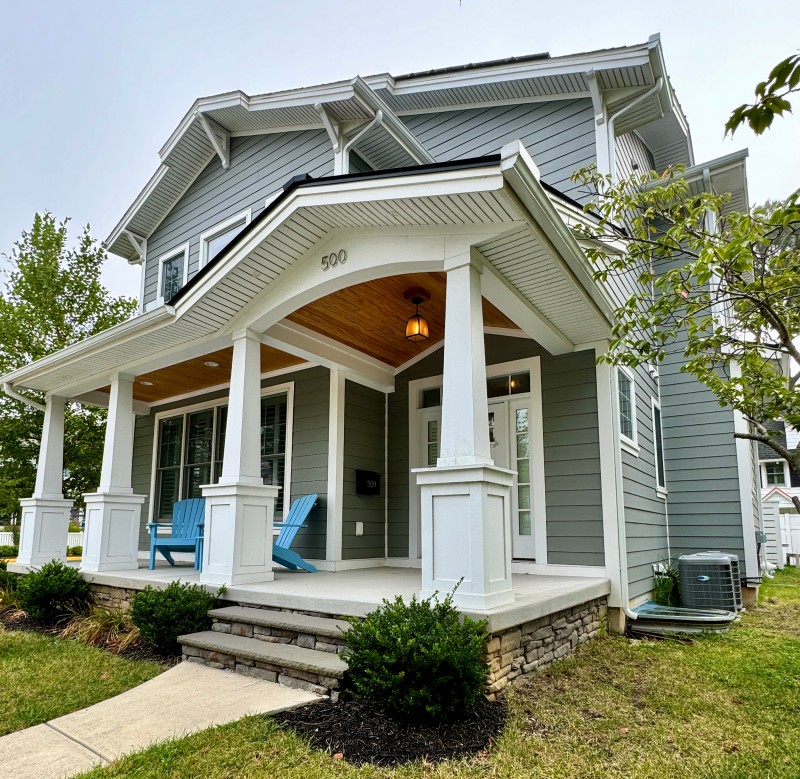There are houses that look shiny and perfect when they’re newly built, but within a few years some feel dated, awkward, or already in need of a big makeover. And then there are homes that seem to never age-out. They hold up, not only in how they’re built, but in how they feel. Designing a home that ages well takes some planning and effort. Keep reading to find out what you could do to make it happen.
Use The Right Materials
Longevity in design depends on material choice. Paint colors can be changed, furniture comes and goes, but the fixed features are more permanent. So for homes that age well, there’s an investment upfront in materials that pays off. Consider hardwood or engineered wood floors instead of laminate. Brickwork and natural stone offers a longer life than vinyl siding. Stone, in particular, is one of those things that never really goes out of style. It often looks as good 50 years from now as it does today.
That’s why working with a trusted natural stone supplier can be one of the best decisions you make. Whether it’s for kitchen worktops, bathroom tiles, or even flooring, stone weathers beautifully, develops character over time, unlike short-term materials. It’s also easier to repair or refresh if it gets chipped or worn down. Cheaper alternatives can end up in landfill after a few years.
Avoid Too Many Trends
Back in the 1970s, every new home seemed to have a sunken living room and conversation pit. Bathroom fixtures were avocado-green. Orange and brown were all the rage. While on-trend at the time, the problem with designing a house around what’s hot right now is that time will catch up. If the styles feel cutting edge now, they can quickly feel dated. And ripping out fixed elements just to keep up is time-consuming and expensive.
The trick is to go for layouts that work with the way people actually live throughout a lifetime, and not just for today. Creating spaces that are flexible for day-to-day living at every stage of life, and accommodating for entertaining is key. Adding little nooks, dividing walls, or sliding doors can create flexibility, and that kind of mindful functionality is what makes a house last.
Think About Maintenance From The Start
A home that ages well isn’t necessarily one that stays pristine forever, it’s one that’s built with reasonable maintenance in mind. Flat roofs might look good, for example, but they’re notorious for leaks down the line. Huge glass walls are beautiful, but unless you’ve got the budget for constant cleaning and high-end glazing, you may resent them.
Good design looks ahead and asks what things are going to look like in a few years time. Choosing low-maintenance materials, planting gardens that don’t need constant tending, and setting up systems (like efficient heating and insulation) that save you money in the long run all contribute to a home that feels easier, not harder, as it ages.
Design For Adaptability
Families change. People age. Life throws curveballs. A house that only works for a single stage of life won’t feel right forever, and that’s why adaptability matters. Maybe that downstairs office can easily be turned into a bedroom later, or maybe the bathroom has enough space to add a walk-in shower if needed. Maybe the wide hallway isn’t just a design quirk–it’s future-proofing for mobility aids later.
Designing for adaptability doesn’t mean giving up style, it means thinking a step ahead, and in the end, the homes that people never want to leave are often the ones that can change around their needs, instead of locking them into a single way of living.
Don’t Skimp On Light And Air
Natural light is one of the most underrated design features, and big windows, skylights, and well-placed openings make a home feel alive, no matter what year it is. The same goes for airflow. For example, a house that’s designed to ventilate properly, with cross breezes, operable windows, and strategic positioning, just feels healthier, and that matters more as a house ages.
Artificial lighting trends come and go. Pendant lights, spotlights, LED strips… they’ll all change with time. But natural light never loses its charm, and a home bathed in daylight, with fresh air moving through, always feels timeless.
Respect The Setting
A home that ignores its surroundings can look out of place, no matter how expensive or trendy it is, and the best designs work with the landscape rather than against it. If you’re building in a historic neighborhood, nod to that history instead of pretending it isn’t there. And if you’re in a rural setting, use materials that match the landscape around you.
This doesn’t mean you can’t be modern or creative, it just means your home will feel more connected and make more sense, and that’s one of the things that makes a house age gracefully.
The Beauty Of Imperfection
There’s something important to remember: no home stays perfect. Paint chips, floors scuff, tiles crack… The homes that feel right over the years are the ones where those imperfections don’t ruin the overall feel, and they’re basically absorbed into the fabric of the place, and just become part of its character. Natural materials are well-suite for this. After all, a stone floor with a few scratches looks lived-in, not ruined, and a wooden banister polished smooth by years of hands doesn’t need replacing; it feels like home because of it.
The goal shouldn’t be to freeze your home in time, it should be to let it grow with you. A house that ages well isn’t the one that looks untouched; it’s the one that feels even more comfortable and full of life as the years go on. So why not see what you could change today to make your home one that you’ll love for years to come?


